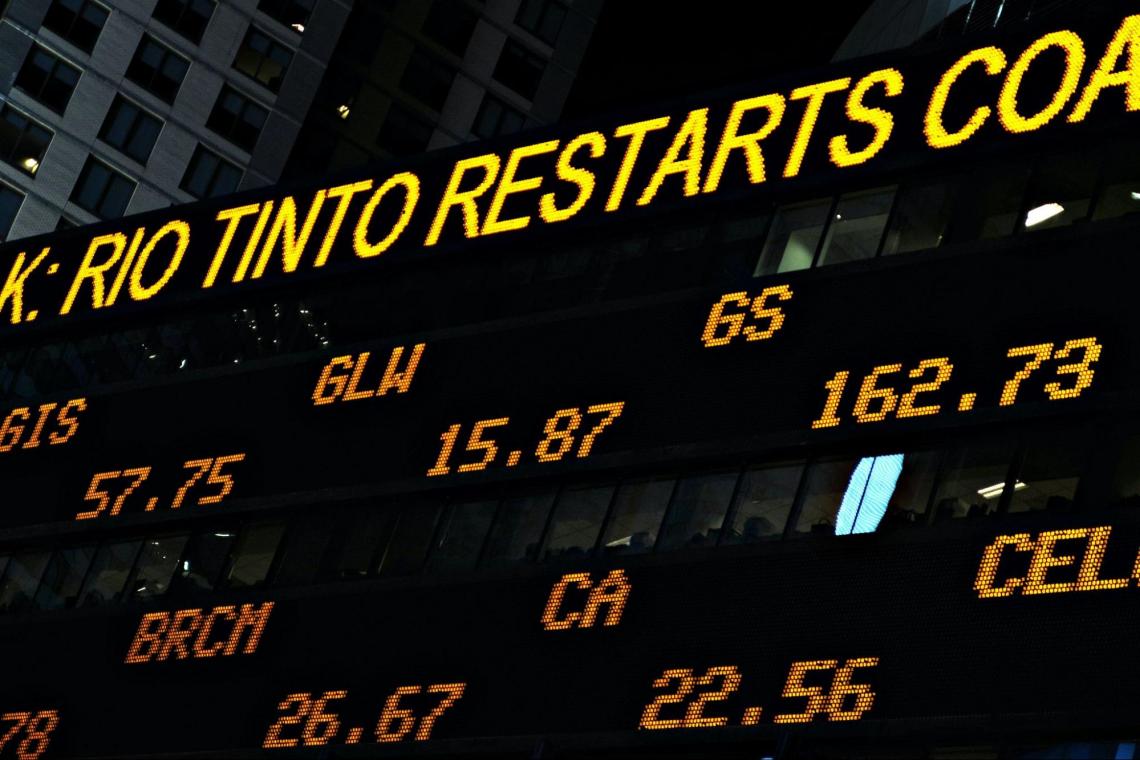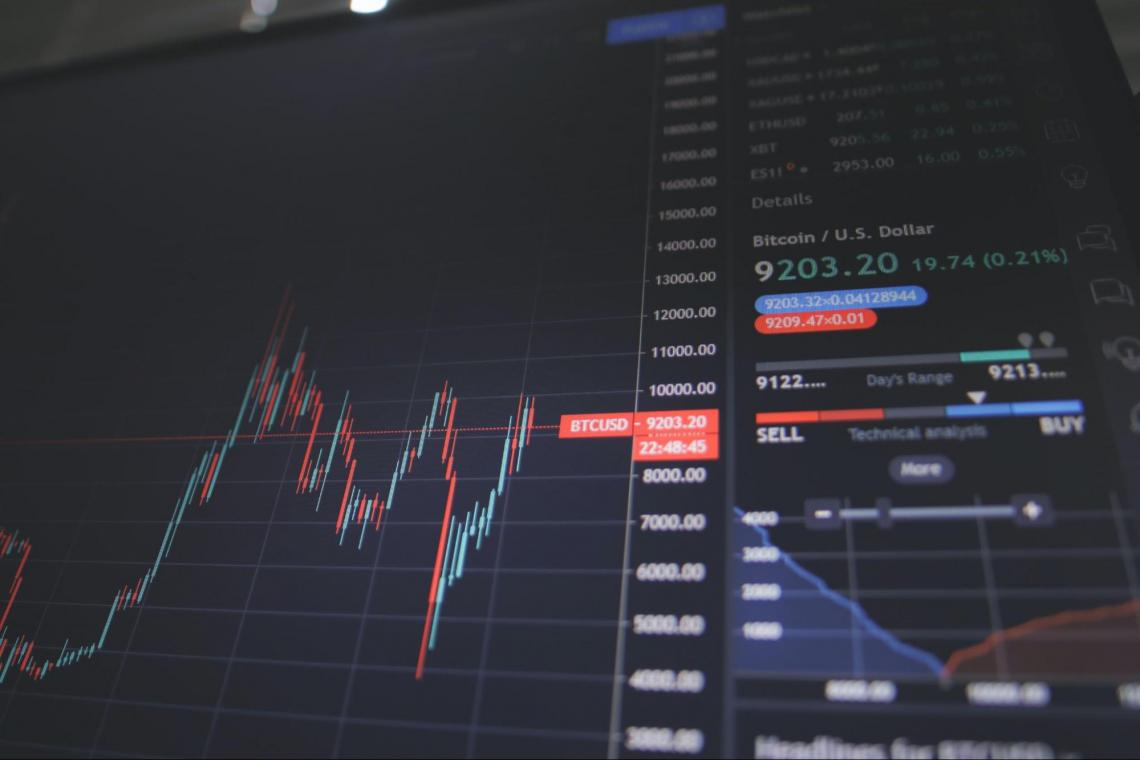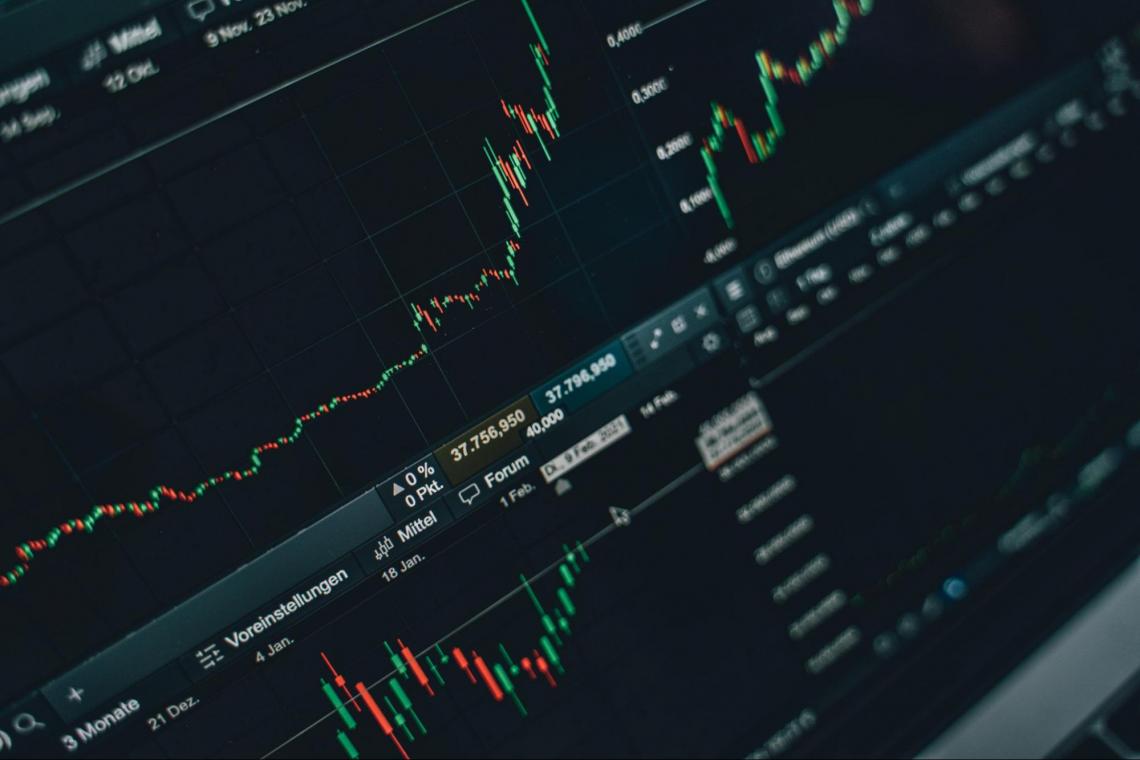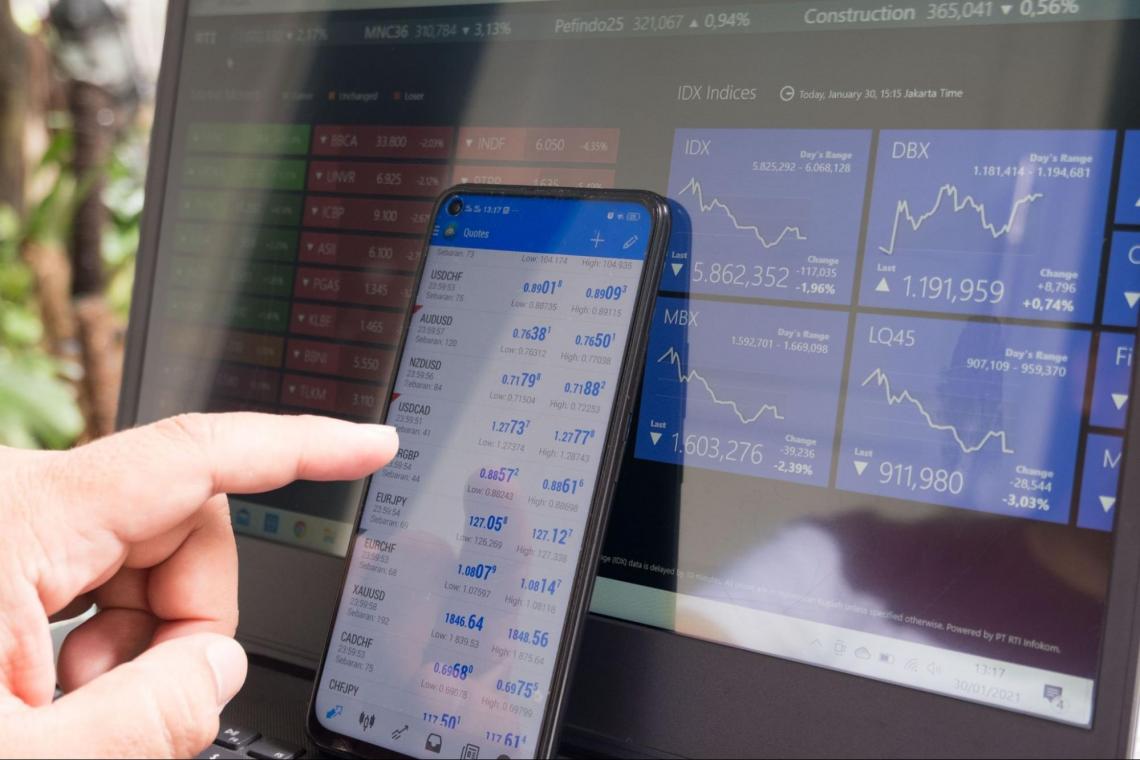Vertical Spread
Strategies that help traders or investors make money and simultaneously protect their downside.
In this article, we will learn about option trading strategies using options spreads that focus more on directional positions than intraday trading.

These strategies help traders or investors make money and simultaneously protect their downside.
Factors like global events, sector-specific events, interest rate changes, company-specific events, and so on affect the returns you may yield from a trade.
You will be able to apply appropriate strategies when you understand the products on which you're using them.
Thinking of innovative combinations about how to use options and form a strategy will be very beneficial for a trader. Exotic options or exotic products are nothing but a combination of different types of derivative products.
An individual must understand the risk/return profile of vanilla call/put options before understanding option trading strategies. The only thing that limits a trader from exploring different strategies is his thinking.
This options trading strategy is primarily for individuals who want to hold their positions for a couple of days or weeks.

This strategy involves options with the same expiry date but different strike prices.
A trading strategy with both call and put options is utilized for anticipating the movements and creating spreads for acquiring and selling the options at different strikes.
A call option refers to a contract where the buyer has the right to acquire/purchase an underlying asset (stock, bond, or any other asset) at a predetermined price before a set expiration date.
The definition may vary under a bullish market and a bearish market.
The put option refers to the right the seller has to sell a financial instrument before a set date. The financial instruments can be stocks, currencies, and futures.
The predetermined price is known as the strike price. The date at which rights are exercised is known as the exercise date. And lastly, the fee charged for the right to be exercised is known as a premium.
Understanding Options Trading and Vertical Spreads
Options trading is the exchange of financial instruments that grant you the right to buy or sell a certain investment at a given price and date. Options are financial derivatives that depend on the value of underlying assets, such as stocks.

Depending on the type of contract, an option gives the buyer the option of buying or selling the underlying asset.
In contrast to futures, an option holder is not required to buy or sell the asset if they want.
Unlike futures, which provide a straight-line Profit & Loss curve, trading options can be adjusted to a trader's return and risk requirements.
A VS is one of more than a million potential options strategy combinations made possible by the options chain. The Bull Call Spread and Bear Put Spread are the two most popular spread strategies.
These are vital but sometimes neglected techniques. In such a strategy, a put option with the same expiration date but a higher strike price is bought, and a second put option with the same expiration date is sold.

Butterfly spreads and condor spreads are additional names for these spread techniques. The strike prices are positioned lower and higher inside the same expiration cycle, which is why the spread is known as a "vertical" spread.
On the other hand, a calendar spread gets its name because the long and short options would have the same strike price but separate expiration dates.
This investment strategy aims to benefit from the time value premium of options by reducing the possibility of a trade going sour.
Each option contract shall contain a time for the exercise of the option by the option holder. The option's specified price constitutes the option's striking value.

The basis for numerous option methods for hedging, income, and speculation are call-and-put options. A trader can maintain a leveraged position by betting on options positions in an asset for less money than buying the asset's shares.
Options are frequently utilized to limit one's downside losses in a declining stock market.
Additionally, traders aiming to leverage volatility in their favor can use this trading strategy. Depending on how long you own the stocks, you might have to pay long-term or short-term capital gains taxes to cover the cost.
Additionally, incorporating stocks within your plan can restrict the utilization of options as a potential tax benefit.
What is the Vertical Spread Trading Strategy?
An options strategy that comprises a combination of different types of options contracts is referred to as a "vertical spread" trading strategy.

You buy one call and sell another with the same expiration date but a different strike price. This strategy limits both potential profit and risk.
This trading strategy is used by traders when they anticipate a moderate change in the underlying asset price.
It enables you to trade in a specific direction while determining your trade's maximum profit and maximum loss (known as defined risk) at entry. It is a credit or negative spread if one position offsets the other by lowering the cost base.
Defensive strategies are somewhat constrained because the maximum loss is known at order entry. Losing positions are not defended because the maximum loss in a debit spread is known at order entry.
However, the maximum loss in a credit spread is unknown, so managing this spread trading strategy is imperative.
With the help of this strategy, we can trade in a direction while specifying our maximum profit and maximum loss at the entrance (known as defined risk).
Nevertheless, this strategy is impacted by implied volatility (IV), even if naked options are where it shines. In high IV conditions, we prefer to sell premium, while in low IV environments, we want to acquire premium.

We try to sell our positions when the implied volatility is high in the hopes that the IV will decline. We look to purchase vertical spreads to maintain engagement and possibly utilize them to hedge against our short volatility risk when the IV rank is low.
Types
This strategy goes further by combining either calls or puts. Hence these can be further categorized as
- Bullish
- Using Call options
- Using Put options
- Bearish
- Using Call options
- Using Put options
Bullish Vertical Spread using Calls
A bullish VS is a bullish strategy, as the name suggests. Here the trader's view on the market is bullish, but at the same time, the trader decides to reduce the cost of his position.

He does so by taking a long call position of a lower strike and selling a call option with a higher strike. In this situation, the lower strike call option costs more than the premium earned by selling a higher strike call option.
A bull call spread is created using one long call with a lower strike price and one short call with a higher strike price. The underlying stock and expiry date for both calls are the same.
If the market price at expiration (or trade execution) is at or above the short call strike price, you will earn the most from a long call spread. In this instance, before reaching the short strike, when gains are limited, the long call would have gained in value as much as possible.
If the underlying price is at or below the long call strike price, you will suffer tremendous loss, which is the debt you paid upfront for the trade.
In this debit spread, profits are capped at the difference between the strike prices, less the debit paid upfront, while losses are restricted to the position's net cost at entry.
Another way to squeeze out more profits in this situation is to short an as high as possible call option. Still, the drawback is that the costs would go down only marginally, as the higher strike call option fetches lesser and lesser premiums.

An illustration will help you better comprehend the strategy:
A trader is bullish on the markets, and he decides to long a 31,000 strike call by paying a premium of 350, and at the same time, he estimates that the market will not go above 31,600.
So he then shorts a 31,600 call option and receives a premium of 140, hypothetically.
Assuming a trader who is optimistic about the markets decides to buy a call option with a strike price of 31,000 by paying a premium of 350 and predicts that the market will not rise above 31,600.
So, hypothetically, he shorts a 31,500 call option and earns a premium of 140.
| Option | Call | Call |
|---|---|---|
| Long/Short | Long | Short |
| Strike price | 31,000 | 31,600 |
| Premium | 350 | 140 |
| Spot price | 31,300 |
The pay-off for the various price movements using the above strategy is as follows:
| CMP | Long Call | Short Call | Net Flow |
|---|---|---|---|
| 30,800 | -350 | 140 | -210 |
| 30,900 | -350 | 140 | -210 |
| 31,000 | -350 | 140 | -210 |
| 31,100 | -250 | 140 | -110 |
| 31,200 | -150 | 140 | -10 |
| 31,300 | -50 | 140 | 90 |
| 31,400 | 50 | 140 | 190 |
| 31,500 | 150 | 140 | 290 |
| 31,600 | 250 | 140 | 390 |
| 31,700 | 350 | 40 | 390 |
The data above shows that this method has a limited profit and loss potential. The trader can make up to 390 in profit on this position, and they can lose up to 210.
Bullish Vertical Spread using Puts
Another technique for a trader to start a bullish spread position is a comparable bullish market outlook. In this case, the trader will short put options because he has a bullish outlook and wants to make money from the premiums.

A short put vertical spread consists of a long and short put at separate strikes in the same expiration and is a bullish defined-risk strategy.
Short put vertical spreads lose value when the underlying asset price rises since the short put's strike price is greater than the long put's, and vice versa.
The trader receives the premiums from the puts they shorted when the value of the market increases. The trader risks an unlimited loss if the market starts to fall.
Therefore, the trader purchases a put option with a lower strike price to set a floor under his potential downside. Currently, such a position lowers the trader's overall premium but functions as an ins.

You will benefit the most if the market price at expiration is equal to or higher than the short put's strike price. However, you would suffer the greatest loss if it were equal to or lower than the strike price of the long put.
The greatest profit in this credit spread is equal to the net premium collected upfront. Conversely, the maximum loss equals the difference between put strikes, less the net premium collected upfront.
Let us look at this strategy using an example:
Example:
| Option | Put | Put |
|---|---|---|
| Long/Short | Short | Long |
| Strike price | 31,600 | 31,300 |
| Premium | 300 | 130 |
| Spot price | 31,300 |
The pay-off table for the above position will be as follows:
| CMP | Long Put | Short Put | Net Flow |
|---|---|---|---|
| 30,800 | -500 | 370 | -130 |
| 30,900 | -400 | 270 | -130 |
| 31,000 | -300 | 170 | -130 |
| 31,100 | -200 | 70 | -130 |
| 31,200 | -100 | -30 | -130 |
| 31,300 | 0 | -130 | -130 |
| 31,400 | 100 | -130 | -30 |
| 31,500 | 200 | -130 | 70 |
| 31,600 | 300 | -130 | 170 |
| 31,700 | 300 | -130 | 170 |
The table above shows that this technique is a net premium receipt method. The trader in this scenario has a limited position for profit and loss. The trader's potential loss is capped at 130, and their potential gain is 170.
Bearish Vertical Spread Using Calls
A two-leg spread technique called the Bear Call Spread often uses ITM and OTM Call options. A trader initiates a bearish VS using call options when their view on the market is bearish; that is, the trader expects the market to fall.

However, you may also use different strike prices for the strategy. Keep in mind that the potential for profit increases as the spread (difference between the two selected strikes) decreases.
Therefore, a trader uses a low strike, high premium call option, and high strike call option to mitigate losses if prices rise.
After shorting the low strike high premium call option, the trader goes long on a high strike call option and hence pays a lesser premium. Thus this strategy starts with a net inflow for the trader.
If the trade expires worthless and OTM at expiration, the credit obtained upfront represents the greatest opportunity for profit.
This occurs when the short call's strike price is equal to or lower than the underlying asset's price upon expiration (or trade execution).
In contrast, you'd suffer the most loss if it's greater than or equal to the long call's strike price.
In this credit spread, profits are capped at the net premium upfront, while losses are capped at the difference between the call strikes, less the net premium collected ahead.
Let us look at an example to have a better understanding of the same:
Example:
| Option | Call | Call |
|---|---|---|
| Long/Short | Long | Short |
| Strike price | 31,600 | 31,000 |
| Premium | 140 | 350 |
| Spot price | 31,300 |
The pay-off for the position mentioned above would be as follows:
| CMP | Long Call | Short Call | Net Flow |
|---|---|---|---|
| 30,800 | -140 | 350 | 210 |
| 30,900 | -140 | 350 | 210 |
| 31,000 | -140 | 350 | 210 |
| 31,100 | -140 | 250 | 110 |
| 31,200 | -140 | 150 | 10 |
| 31,300 | -140 | 50 | -90 |
| 31,400 | -140 | -50 | -190 |
| 31,500 | -140 | -150 | -290 |
| 31,600 | -140 | -250 | -390 |
| 31,700 | -40 | -350 | -390 |
The information above shows that this strategy is a limited profit and loss position. The trader's total potential loss is 390 at any given time, and his prospective earnings are always limited to 210 at any given time.
Bearish Vertical Spread Using Puts
A bearish risk strategy known as a long put vertical spread consists of a short and long put with different strike prices in the same expiration cycle.

The value of a long put VS will rise as the price of the underlying asset declines since the long put's strike price is higher than the short put's, and vice versa.
Implementing the Bear Put Spread is simple. When the market forecast is moderately bearish—when you anticipate that the market will decline in the short term but not significantly—you would use a bear put spread.
A correction of 4-5% would be appropriate if I were to quantify what I mean by "moderately bearish."
If the markets are correct as expected (go down), one would make a modest profit by using a bear put spread; but, if the markets move up, the trader would only suffer a small loss.
An example would help understand this strategy:
Example:
| Option | Put | Put |
|---|---|---|
| Long/Short | Short | Long |
| Strike price | 31,300 | 31,600 |
| Premium | 130 | 300 |
| Spot price | 31,300 |
And the pay-off for the above position will be as follows:
| CMP | Long Put | Short Put | Net Flow |
|---|---|---|---|
| 30,800 | -370 | 500 | 130 |
| 30,900 | -270 | 400 | 130 |
| 31,000 | -170 | 300 | 130 |
| 31,100 | -70 | 200 | 130 |
| 31,200 | 30 | 100 | 130 |
| 31,300 | 130 | 0 | 130 |
| 31,400 | 130 | -100 | 30 |
| 31,500 | 130 | -200 | -70 |
| 31,600 | 130 | -300 | -170 |
| 31,700 | 130 | -300 | -170 |
If the market price at expiration, or the execution of the deal, is at or below the short put's strike price, you would benefit the most. Conversely, you would suffer the greatest loss if it were greater than or equal to the long put's strike price.
The highest potential profit in this debit spread is the difference between the put strike prices, less the net premium paid upfront, and the maximum possible loss is the net premium amount paid upfront.
The bearish VS utilizing puts is a limited profit and loss position, as seen from the table above. In this scenario, the maximum profit is limited to 130, and the maximum loss 170.
Conclusion
Traders will use a vertical spread when they expect the underlying asset price to fluctuate slightly.

In directional trades, VS can be tailored to reflect the trader's opinion of the underlying asset, whether bullish or bearish.
Despite being a neutral strategy, the short strangle is used when the trader believes that the underlying stock will have very little volatility soon.
The short-strangle option is a strategy with limited profit and unlimited risk potential. In contrast, this strategy has minimal risk and a large pay-off.
When two call or put positions (buy and sell) with the same underlying asset and expiration but different strike prices are open simultaneously, this is known as a vertical spread.
These spreads are directional trading techniques for options. They can be divided into four categories: long calls, short calls, long puts, and short puts.
Your strategy and where the stock price is at expiry relative to your spread strikes determine whether you make money or lose money on a market movement prediction.
Due to the nature of this spread as a risk-defining technique, profits and losses are restricted to a range of values based on the pertinent computations.









or Want to Sign up with your social account?